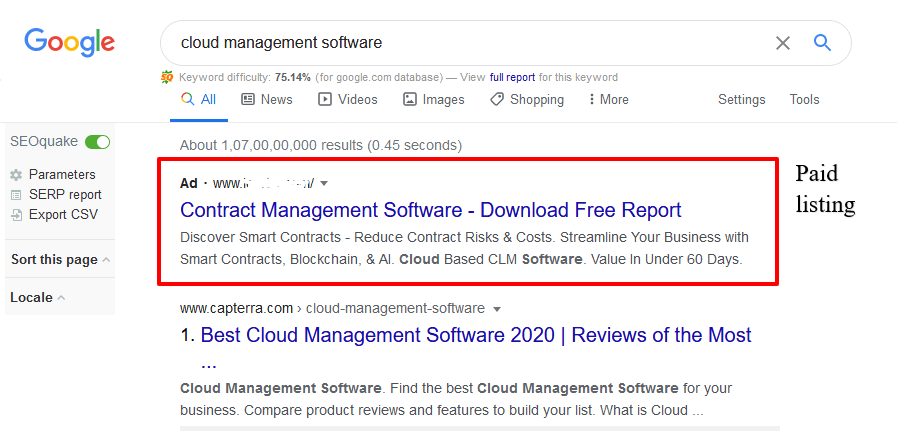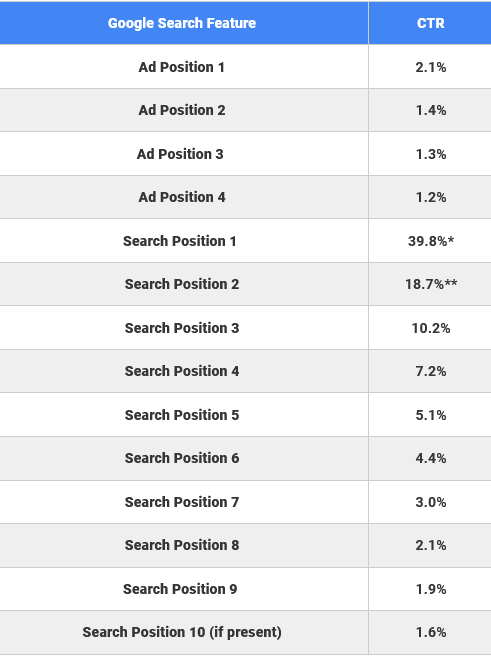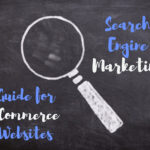Is your search engine marketing campaign giving you the expected results?
In this article, you are going to learn some incredibly amazing search engine marketing hacks that will help you increase your advertising campaign ROI immediately.
Did you know?
“Google processes approximately 99,000 search queries every second.”- 2023 Digital Marketing Statistics
How many are organic searches driving traffic to your website?
Not enough! Right? That is the reason people use search engine marketing (SEM) to attract more visitors using paid campaigns.
Search engine marketing never going to be out of trend. All businesses involve SEM in their primary marketing strategy.
The global digital advertising and marketing market was estimated at $350 billion in 2020 and is projected to reach $786.2 billion by 2026.

Getting the top position in the search engine is not easy.
So here you can jump the hard work and get to the top by following these search engine marketing tips and advanced techniques shared by expert digital marketers.
What is search engine marketing (SEM)?
Search Engine Marketing is a digital marketing method that intends to increase brand visibility in search engines, through pay-per-click (PPC) advertising.
You have seen the text ads, products listing ads, and various other types of ads when you search in Google. All these come under search engine marketing. People click on it and make the purchase.
P.S. Often people get confused with SEO and SEM. SEO is more about organic website traffic and whereas SEM is about paid website traffic through the search engines.
Search engine marketing helps you get instant website traffic and results to keep your business alive.
Google has a limited number of placements to show ads on each search engine result page.

But, again… It’s really difficult to win the auction to get 1st rank in search engine. Advertisers have to bid smartly to gain the top position and beat the competitors who are bidding for the same keywords as yours.

You have to use some actionable search engine marketing hacks to achieve top position and better conversions in your budget.
Here is the list of top SEM hacks you should learn to improve your campaign performance:
#1 Find the best time of the day and increase the bid
Talking about search engine marketing hacks, I’ve hacked the timing data under the Report tool in Google Ads with great success.
All I did was find the time of the day my campaigns were getting maximum interactions and increase bids. Creating an ad schedule didn’t only ensure clients get calls during open hours but also helped improve the visibility of ads and the quality of the leads.
To find data for when ads are getting the highest interactions, go into Settings > Create Ad Schedule > Schedule Details > Hour and Day of the Week.
To set campaigns to run on a specific time of the day, click on +Create a Schedule and choose a campaign. Once that’s done, click Save.
To apply a new bid regime to the adjusted timing, use the Bid Adjustment column on the adjacent side. Worth mentioning though, this tip works best for an active campaign. New campaigns may have to wait sometimes to gather data.
Jake Rheude, VP of Marketing at Red Stag Fulfillment
#2 Keyword and search queries relevant to the audience
Here are some steps to make sure you move the needle in the right direction:
Keywords: Keywords are still at the heart of search engines, and with the increase in voice search, you must target even more semantic terms and long-tail keywords. Use tools like SEMrush Keyword Magic or Topic Research to generate relevant lists of primary and secondary keywords before starting any SEM campaign.
Search queries are of three types: informational, navigation, and transactional. Search engines change the way ads are displayed based on the nature of the query. Be sure to create ads based on search engine intent, taking into account customer journey and sales funnel.
Audience: Get to know your audience and understand their needs and interests. When you do that, you will have a better chance of making SEM work, as you will be able to engage them with marketing which means something to them.
Landing page: Your landing pages need to be optimized, as they are a critical step that can convince people to convert them or rush them out. Carry out a thorough analysis to determine if your pages need to be modified to be compatible with your SEM listings. If your site doesn’t support SEM, please correct it to provide a smooth and enjoyable user experience.
SEM campaigns: When you are sure everything is on point, you can launch your campaign. Now get ready to see the key metrics and get ready to analyze the results.
After launch, keep a close eye on your keywords to see which terms deliver the results you want. Over time, you can identify winners and losers, and then you can adjust your bids accordingly.
Based on the results, determine what offer changes to make. Track your conversions over time to see where you are missing potential conversions.
Somewhere in your funnel, people are abandoning. If you can identify areas of neglect, you can address the problem to improve your fortune
#3 Test conditional long-tail keywords in ad copies
Many people make mistakes during setting a google ad account or when they start working on google ads, but it’s ok to make mistakes. After all, a person learns from his mistakes.
There are several numbers of mistakes that people are doing in running an ad on Google AdWords like the mistakes people often make is using the wrong keyword match type. Google allows you to serve your ads on any of the keyword matches above. It is your sole responsibility to decide which one to use: wide and exact phrase.
Lack of ad extension and poorly written ads. Google has made it easier for you to write a better copy of the ad and adjust its settings to get the best ROI. With ad extensions, you can use links to sites, calls, and location extensions to enhance your ad.
Many Google advertisers make the mistake of ignoring the importance of compiling a list of negative keywords, and then wonder why their ads aren’t converting the way they’re supposed to.
Tips for creating effective Google Ads
The first Google AdWords tip you will learn here is to stop using only broadly matched keywords. The thing is, broadly matched keywords give Google the right to interpret your keywords in different search queries.
This will make your ads appear when users perform irrelevant searches. This means that you will lose money on clicks that will not bring your business. Always use conditional long-tail keywords in ads. Add negative keywords. Negative keywords remove certain keywords from triggering your ad display.
This is a great Google AdWords tip that will increase your conversion rate. Several case studies show that this Google AdWords tip is a great way to increase your conversion rate and increase your income. The last one is always targeting the relevant audience.
Oliver Andrews, Owner at OA Design Services
#4 Use SEO and SEM together
I started a global branding and marketing firm 19 years ago. My tip is that using SEO and SEM together is ideal as main search engines are constantly changing their algorithms for rankings so stop thinking of SEO and SEM as rival forces. When used together they are complementary services that help boost your marketing strategy and increase brand exposure.
The key is to build brand awareness and trust in your brand or business which begins by getting your business name to appear in prospect’s searches. Seeing your brand name appear twice, both on organic and on paid results creates more brand awareness and intensifies your businesses’ trustworthiness.
Research shows that if there are two brands that have apparently the same products, people will be more likely to choose the one they are familiar with.
When a brand is shown in organic results alone it only gets 60% of clicks, whereas a brand that appeared in both organic and paid search results, attracts 92% of total clicks.
When paid listings are shown beside organic, the click-through rate of paid ads increases. This means that clicks increase for both organic and paid listings when they are both featured and do not detract from each other.
Paige Arnof-Fenn, Founder & CEO, Mavens & Moguls
#5 eCommerce SEM tip: Use product feed testing to optimize product names
Using Product Feed Testing to Optimize Product Names to Get Maximum Performance from Google Shopping
The name of your products in the eCommerce space makes a big difference. We tested 3 feeds in this example for one of our jewelry clients. For this test, we reversed engineered product titles with common seed words picked up from past converted search terms.
Feed #1: Title + Unique Fine Jewelry
Feed #2: Title + Personalized Jewelry
Feed #3: Title + Custom Design
Feed #1 produced the greatest results for us in PPC – $7 cost & $641 in revenue the first month, and it grew from there!
The bottom line here is to always look back at the terminology used in your successful campaigns. Use it for future campaigns as well as for the website itself.
Ashok Patidar, PPC Manager at Coalition Technologies
#6 Associate your ad copies to the latest trends in the market
Tip #1 – Keep Ad Copy Relevant:
- Need to make sure ad copy is relevant to your audience, always important – but now more than ever with COVID-19
- Phrases related to being open virtually or remotely to your ad copy shows your audience that your business is still running and accepting new clients
- Ads that included these headlines have seen an increase CTR throughout the pandemic compared to those without
Tip #2 – Use Foot Traffic Data
- Keep an eye on when and where people are traveling by using online foot traffic data in order to keep your campaigns up to date
- For example, COVID-19 has kept people from going to out to dinner/bars – less bar traffic = less likely people will drink and drive –> make decisions on whether to keep your DUI Law Firm campaigns running or to invest money elsewhere
- If you are seeing a decline in overall clicks or conversions, foot traffic data may give you valuable insight as to why your campaign performance is slowing down.
David Brenton, President, BluShark Digital
#7 Keyword match types
For one campaign I was managing at the time, I recall getting clicks with no sales (my end goal was sales). I investigated and found I had selected Broad as the match type of choice.
Phrase and Exact were the other two available options, so I started experimenting with the Phrase match, and with some insights gained (including with negative keywords), I switched to the Exact Match type.
With the campaign running a few more days, first off, I observed increased click-through plus users were spending more time on the pages (I had paired Google Analytics with Google Ads to achieve this). By the end of the first week, two high-ticket items had been sold, and by the end of the second week, five.
To put it simply, for anyone new to Google AdWords with a limited budget, choosing ads to run on the Exact Match keyword option has the potential benefits of better conversions (higher quality traffic and leads, increased sales) and decreased ad spend.
Kas Andz, Founder at Kas Andz Marketing Group
#8 Study the publicly available census data and marketing insights first
I am CEO of GreenPal which is best described as Uber for Lawn Care.
To be successful Google AdWords, you have to think outside of the box and look for ways to leverage large data sets to get a competitive advantage.
We leverage our data, combined with publicly available census data, for marketing insights.
For example, in a recent campaign we ran in Nashville, TN, we ran a pay-per-click (PPC) AdWords campaign with one ad targeting the entire metro Nashville area. The headline read ‘Local Lawn Pros in Nashville are a click away.’ and I thought the performance of the ad was good with a click-through rate of over one percent and a conversion rate of over 10 percent on the Nashville landing page but we needed to improve on it.
We thought, how can we make this more contextual and relevant to the viewer? Se we researched census data, looking at the average income and home values throughout the Nashville area.
We found that East Nashville, an up-and-coming neighborhood, was populated with more working class, and a creative class demographic and we hypothesized this customer segment would be price sensitive but still not want to cut their own lawns.
So we segmented those zip codes and only ran a specific ad for them, with a headline ‘The Cheapest Lawn Mowing in Nashville. Lawn mowing from $20.’”
We then created a matching landing page. After running the ad for one month, on-page analytics proved the guess to be true. We saw over 200 percent lift in click-through rate and 30% lift in on-page conversion.
Studying the data your own business generates can tell you which of your online marketing campaigns works best. Do the ads appeal to your target market or another market altogether? The data may also point to completely new areas of customer interest.
Bryan Clayton, YourGreenPal.com
#9 Constantly update negative keywords in your Google ads
This is probably the best way to save money and increase the quality of your results. Consistently look at the search strings that are leading people to click on your ads. There is no way that you could anticipate all of the words that will trigger your ad to be shown.
As a PR and marketing firm specializing in health tech, some of our negative keywords include “intern, cheap, low cost, and wellness.”
Using this method since the 4th quarter of 2019, we brought our click-through rate from 1.91% to 4.77%. That’s because our ads were being shown less to less relevant searchers.
Elizabeth Cooper, Director of Marketing, KNB Communications, LLC
#10 Use numbers & specifics in your SEM campaign ad copy
My biggest advice is to use numbers and specifics in your SEM copy. We ran an ad with one of our games stating that our games “improve cognition.” As a test, we used a more specific copy that said our games “improved cognition by 28%,” as opposed to a general improvement.
The CTR increased by 17% which was huge. It was a lesson that users are attracted to specific numbers. They bring credibility to your product because they suggest that it’s research-backed and proven.
Now, in all our SEM copy, we try to be as specific as possible. We ran SEM copy talking about how 1,612 people played one of our games the previous day. It was both times relevant and specific and lifted our CTR by 11%.
Neal Taparia, Solitaired
#11 eCommerce SEM tip: Doing a Competitive Analysis Using Amazon Product Searches
A unique strategy to try for SEM campaigns that people often forget about is analyzing Amazon’s search performance about your unique phrases.
Many SEM experts will do a competitive analysis on Google and Bing. They’re forgetting about a network where many shoppers begin their search.
By reviewing what Amazon is showing at the top of its product search pages, you’ll be able to find key phrases that you can add to your own search terms, ads, and landing pages.
These terms tend to be even better than Google since nearly all Amazon searches are purchase-intent-based.
Logan Adams, Founder at DC Marketing Digital Hour
#12 Personalization and dynamic remarketing ads
Tip #1: Implementing Personalization:
Mainly I focus on implementing personalization through messages and product feeds. For instance, many times people visit a site and perform certain actions (like visit certain product pages or category pages) or adding products to a shopping cart and not buying them for some reason.
I use the funnel visualization feature of Google Analytics to capture the purchase journey of my audience. Later on, I segment my audience based on different stages of their purchase journey.
Once I create such segments, then I run highly personalized ads on my audience, showing them product images (things that they left in their shopping cart but did not buy). I do this through dynamic remarketing ads, where I use highly personalized messages and product feeds)
Tip #2: Optimizing Dynamic Remarketing Ads:
I optimize my campaigns by using Frequency Capping and Bid modification. I make sure that I do not overwhelm my audience with ads.
I do that by implementing frequency capping, which ensures that I do not show my ads more than 3 times to a specific user. I implement bid modifications on keywords at the device level (Mobile Desktop).
Often, I see audiences converting well on Mobile devices VS the Desktop. Hence, I bid aggressively on my keywords over Mobile devices. I also use optimized images and ad sizes, so that I get maximum reach and coverage in every ad auction.
Using the above tactics, I managed to increase my subscribers by 23% at a 60% lower CPA.
Samiksha
#13 Landing page & thank you page optimization for better conversion
There are a couple of hacks that I use to increase sales and conversion.
We all do things like having a similar ad title and meta title of the landing page to increase ad relevance but there are a few things more powerful that can easily increase the sales by 30-35%.
One of my favorite hacks is to *add the phone number in the header with an offer or CTA like a free consultation, shipping, etc., having a form above the fold* has always paid me well with increased leads, I also make sure that I have a form at the bottom of the landing page as well.
Another *unique trick is to create an incredible thank you page offer. * Most companies use a generic “thanks for your order”. That thank you page is the perfect opportunity to build a relationship with the customer and even make them a one-time offer.
The offer can be a physical product or digital product, but can also be focused on joining the community or sharing their purchase on social media. This one small change has led to an instant increase in order value. This applies to product thank-your pages, but can also apply to lead magnets and email opt-ins.
Shiv Gupta, CEO at Incrementors Web Solutions
#14 Location-based long-tail keywords in SEM campaign
Local businesses can compete with larger businesses that are bidding for the same keywords on Google Ads, Bing Ads, and similar search platforms by using their location throughout their search campaign.
For example, a bike shop in Burbank that sells Trek bikes can add the location to its keyword strategy. The tendency might be to use Los Angeles since Burbank is in the LA area but this would likely lead to more competition and higher ad costs. The bike shop owner is better off using Trek bikes in Burbank or bike repair in Burbank rather than just competing for Trek bikes or bike repair.
The longer-tailed keywords likely will have fewer competitors. And, because Google uses a quality score metric to determine how often ads should be displayed, the longer-tailed keywords need to also be included in the advertiser’s ad copy and on landing pages.
Ad copy with the headline Trek bike shop in Burbank would have a higher quality score than Trek bike shop. In addition, the bike shop would want to have a unique website landing page that includes the relevant keywords.
Katherine Hunter-Blyden, Principal, KHB Marketing
#15 Use keywords that speak to your potential consumers
The best trick i can give with search engine marketing is to remember you aren’t the customer and it is not always about the biggest and fanciest words you can think of; these things don’t always impress the consumer.
Instead, use keywords that speak to your potential consumers by researching what sort of interaction is successful with them and what grabs their attention enough to click. Otherwise, all you are doing is writing a pretty nice sentence, and that is no good without people paying attention.
Jase Rodley, Founder/CEO
Conclusion
SEM is one of a very effective channel to traffic websites and revenue to your business. Investing in search engine marketing is a profitable strategy if you follow all the mentioned tips and techniques. You should always find ways to optimize your campaigns for better results.
The business should avoid some mistakes they are making while doing paid campaigns. You can keep a track of the strategies you are following and tweak them to see the result.
Search engine marketing can drive better conversions and leads to your business if you use it properly.
Which tip you are going to try first? Or Do you have a tip to add? Share in the comment.







1 Comment